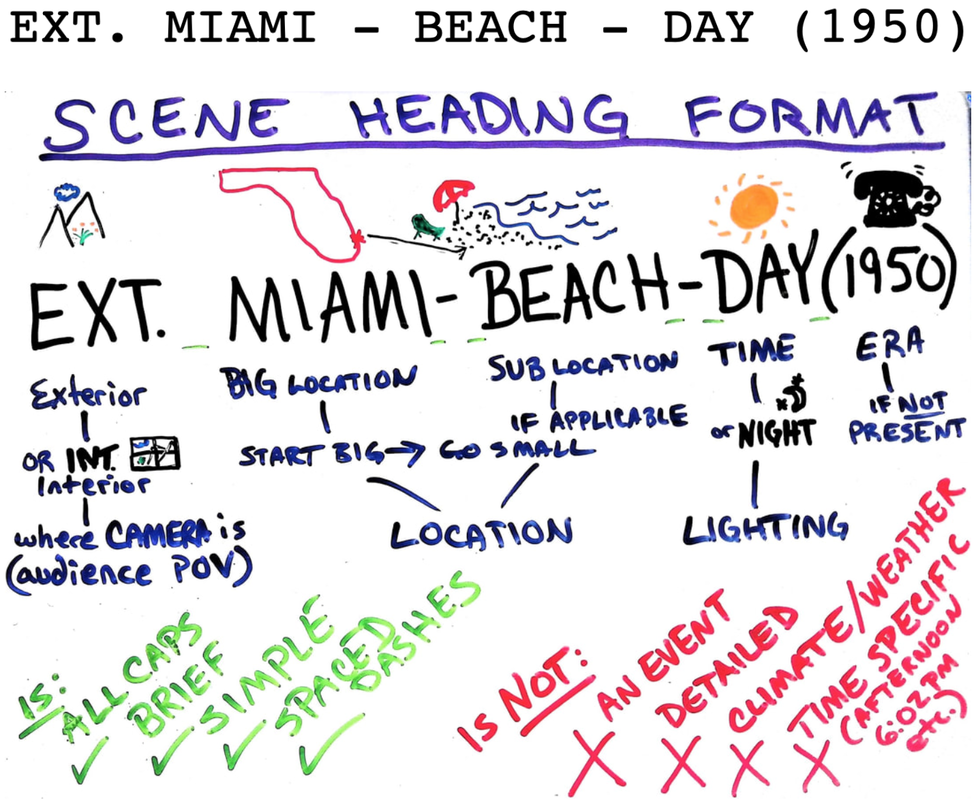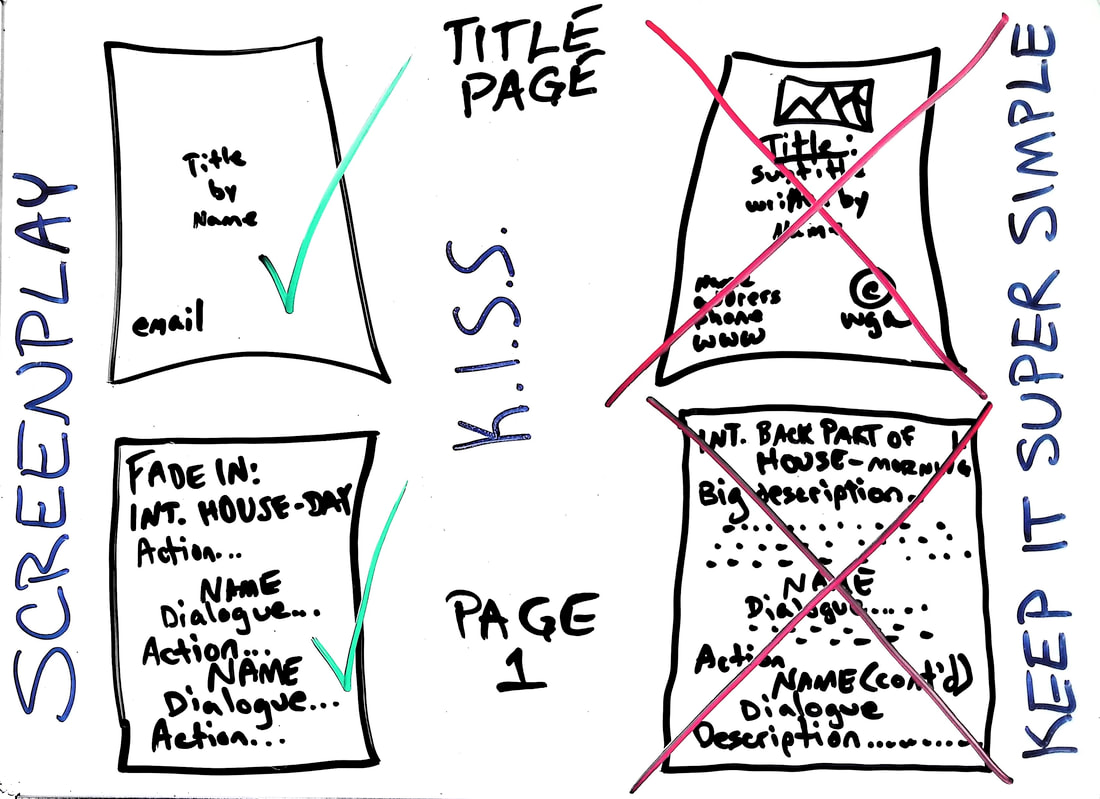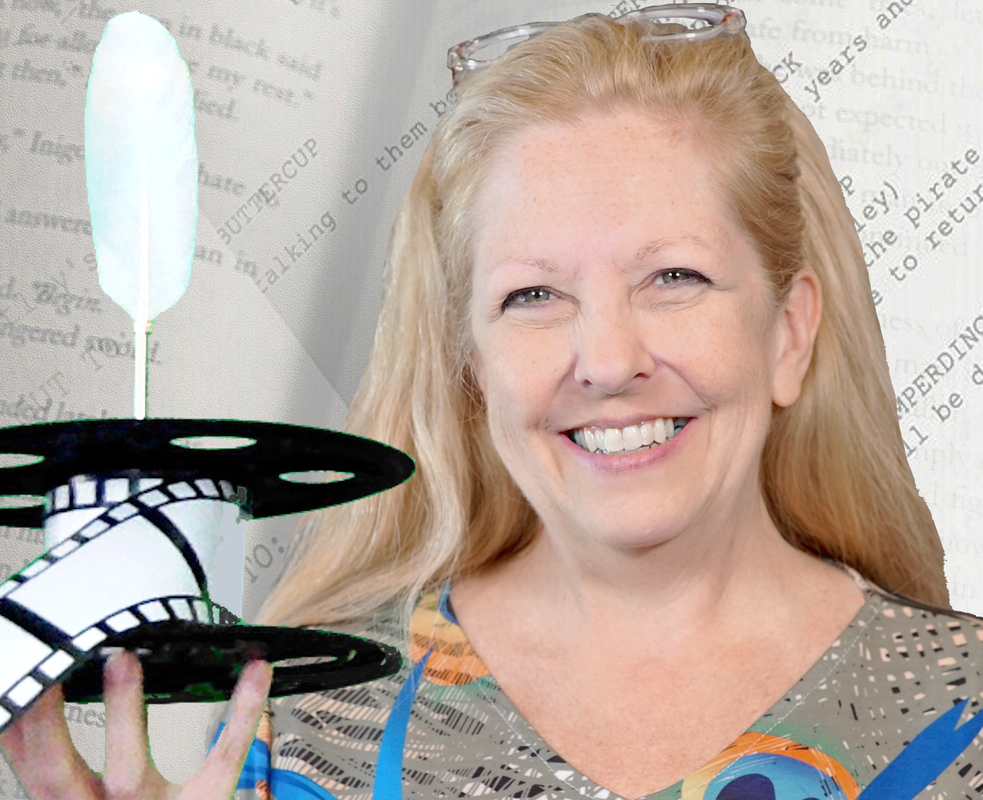This post was prepared for authors,
but it still applies to you, screenwriter,
who will benefit from a style sheet for all your writing.
Are you looking to streamline your writing process? Look no further than a style sheet! I’ve edited books & screenplays for newbies, A-listers & everyone in between. And most of them will agree that a style sheet would have made all of our lives easier before the edit. Before the writing.
|
So, what is a style sheet? Basically, it’s a checklist to help you make conscious decisions before you start writing, & eliminate inconsistencies or mistakes during the revision & editing process. Let's dive into how to use a style sheet effectively.
BEFORE YOU WRITE, GET THE TECH READY: The first step is to make a few decisions about what the tech will do with your document, be it a blog, a book, a novel, a screenplay - whatever. Even if you write with a pen & paper or a typewriter, it will be going digital at some point. After you choose which software to use, you need to optimize the format by setting your page size, margins, fonts, indents, & paragraph spacing. And don’t forget to choose whether you prefer straight quotes or smart (curly) quotes. It's important to note that when your preferences differ from your app's defaults, you should change them before you start. For instance, some screenplay apps default to 2 spaces between sentences despite that all prose these days is written with a single space after full-stops. |
TENSE:
Once your tech is ready, it’s time to choose the tense you’ll use. All screenplays are in present tense, but other prose can be in present or past tense. You would never write an entire piece in past perfect tense, which is reserved for things such as filling in backstory. We’ve all read books, blogs & other works that switch tense - sometimes in the same sentence! - & it’s a bit dizzying. And it’s always because no clear decision was made before the writer started. You’ll note as an example that this blog is in present tense, as is the video script, a close cousin of screenplays.
POV (POINT OF VIEW):
The writer’s point of view (aka POV) is a more important consideration than most new writers think, because it dictates the reader’s POV. First person is solely from the perspective of the writer as a character, while second person involves the reader in the narrative, & is rarely used, but might be effective in very few circumstances. Third person is the most common form of prose, & is written from the perspective of an outside observer. While screenplays are always written in present-tense third person, they can be presented as first-person using voice-over narration - Sunset Boulevard-style - or as a second-person Ferris Bueller-type narrative that breaks the fourth wall.
INNER THOUGHTS POV:
The inner life of characters is another consideration best made either before you start writing, or after you’ve written a few pages to get a feel for what works best. There are four types of this category of POV: omniscient, limited, subjective, & objective. Omniscient makes the writer & reader like God, knowing everything about everyone’s most intimate thoughts, feelings & memories. Limited is often more effective in keeping us privy only to key characters whose inner turmoil makes a difference to the overall plot, & by omitting some POVs, it may misdirect us to effect a great surprise, in a whodunnit for instance. Subjective POV means that we aren’t privy to thoughts & feelings, but we can be shown some memories to create sympathy or bias, again making it important to choose whose POV we should or shouldn’t understand. Objective narrative can do the same, though the writer keeps us a little at a distance, Dragnet style: Just the facts, ma’am. It's important to establish rules that stipulate which character types are worthy of inner POV. Screenplays have to get a bit creative to give us those innermost thoughts & emotions since the page & screen only give us what we see & hear.
Okay, now we’re getting into the kind of nitty gritty an editor like myself can geek out on, but it’s important for every writer to take a few minutes to ensure it’s all set up & close at hand during the writing process…
WRITER STYLES, HABITS, & PREFERENCES:
Your writing style, habits, & preferences are important to consider as well. Sentence spacing, serial commas, comma usage, & hyphens or compound words are all areas where you should establish a pattern early on to make the writing, revising, & editing process easier.
LISTS TO MAKE WHILE WRITING:
Keeping lists of characters, places, & timelines can help you stay organized & prevent mistakes during the writing process. Make sure to include surnames in your list, even if it ends up they never appear in the work. It’ll prevent duplication of names. You can also create a list of places to keep things straight, & avoid similar namings. For example, I've read stories with 3 unrelated characters named Jack, another with the last name Jackson, & an important flashback that took place in Jackson Hole, Wyoming, & still other scenes referencing Jack Nicholson, but there was no story reason for any of it except for the Nicholson reference. Had the writer been using a style sheet, this & the many other overlapping things I've encountered would never have happened in the first place.
CONCLUSION:
To sum up, by using a style sheet & making conscious decisions before you start writing, you can streamline your writing process & eliminate a bunch of unforced errors & inconsistencies either you, your editor or your reader will have to suffer through later on!
Let me know if you have any comments or questions, but first, be sure to download my style sheet template & comprehensive cheatsheet at WowHollywood.com/VOWstyles. It can be opened in Word, Google Docs or whatever program works with docx so you can make changes.
If English is your second language, or you're a non-American writer, be sure to check out the additional bonuses that address your unique needs.
Once your tech is ready, it’s time to choose the tense you’ll use. All screenplays are in present tense, but other prose can be in present or past tense. You would never write an entire piece in past perfect tense, which is reserved for things such as filling in backstory. We’ve all read books, blogs & other works that switch tense - sometimes in the same sentence! - & it’s a bit dizzying. And it’s always because no clear decision was made before the writer started. You’ll note as an example that this blog is in present tense, as is the video script, a close cousin of screenplays.
POV (POINT OF VIEW):
The writer’s point of view (aka POV) is a more important consideration than most new writers think, because it dictates the reader’s POV. First person is solely from the perspective of the writer as a character, while second person involves the reader in the narrative, & is rarely used, but might be effective in very few circumstances. Third person is the most common form of prose, & is written from the perspective of an outside observer. While screenplays are always written in present-tense third person, they can be presented as first-person using voice-over narration - Sunset Boulevard-style - or as a second-person Ferris Bueller-type narrative that breaks the fourth wall.
INNER THOUGHTS POV:
The inner life of characters is another consideration best made either before you start writing, or after you’ve written a few pages to get a feel for what works best. There are four types of this category of POV: omniscient, limited, subjective, & objective. Omniscient makes the writer & reader like God, knowing everything about everyone’s most intimate thoughts, feelings & memories. Limited is often more effective in keeping us privy only to key characters whose inner turmoil makes a difference to the overall plot, & by omitting some POVs, it may misdirect us to effect a great surprise, in a whodunnit for instance. Subjective POV means that we aren’t privy to thoughts & feelings, but we can be shown some memories to create sympathy or bias, again making it important to choose whose POV we should or shouldn’t understand. Objective narrative can do the same, though the writer keeps us a little at a distance, Dragnet style: Just the facts, ma’am. It's important to establish rules that stipulate which character types are worthy of inner POV. Screenplays have to get a bit creative to give us those innermost thoughts & emotions since the page & screen only give us what we see & hear.
Okay, now we’re getting into the kind of nitty gritty an editor like myself can geek out on, but it’s important for every writer to take a few minutes to ensure it’s all set up & close at hand during the writing process…
WRITER STYLES, HABITS, & PREFERENCES:
Your writing style, habits, & preferences are important to consider as well. Sentence spacing, serial commas, comma usage, & hyphens or compound words are all areas where you should establish a pattern early on to make the writing, revising, & editing process easier.
LISTS TO MAKE WHILE WRITING:
Keeping lists of characters, places, & timelines can help you stay organized & prevent mistakes during the writing process. Make sure to include surnames in your list, even if it ends up they never appear in the work. It’ll prevent duplication of names. You can also create a list of places to keep things straight, & avoid similar namings. For example, I've read stories with 3 unrelated characters named Jack, another with the last name Jackson, & an important flashback that took place in Jackson Hole, Wyoming, & still other scenes referencing Jack Nicholson, but there was no story reason for any of it except for the Nicholson reference. Had the writer been using a style sheet, this & the many other overlapping things I've encountered would never have happened in the first place.
CONCLUSION:
To sum up, by using a style sheet & making conscious decisions before you start writing, you can streamline your writing process & eliminate a bunch of unforced errors & inconsistencies either you, your editor or your reader will have to suffer through later on!
Let me know if you have any comments or questions, but first, be sure to download my style sheet template & comprehensive cheatsheet at WowHollywood.com/VOWstyles. It can be opened in Word, Google Docs or whatever program works with docx so you can make changes.
If English is your second language, or you're a non-American writer, be sure to check out the additional bonuses that address your unique needs.





 RSS Feed
RSS Feed